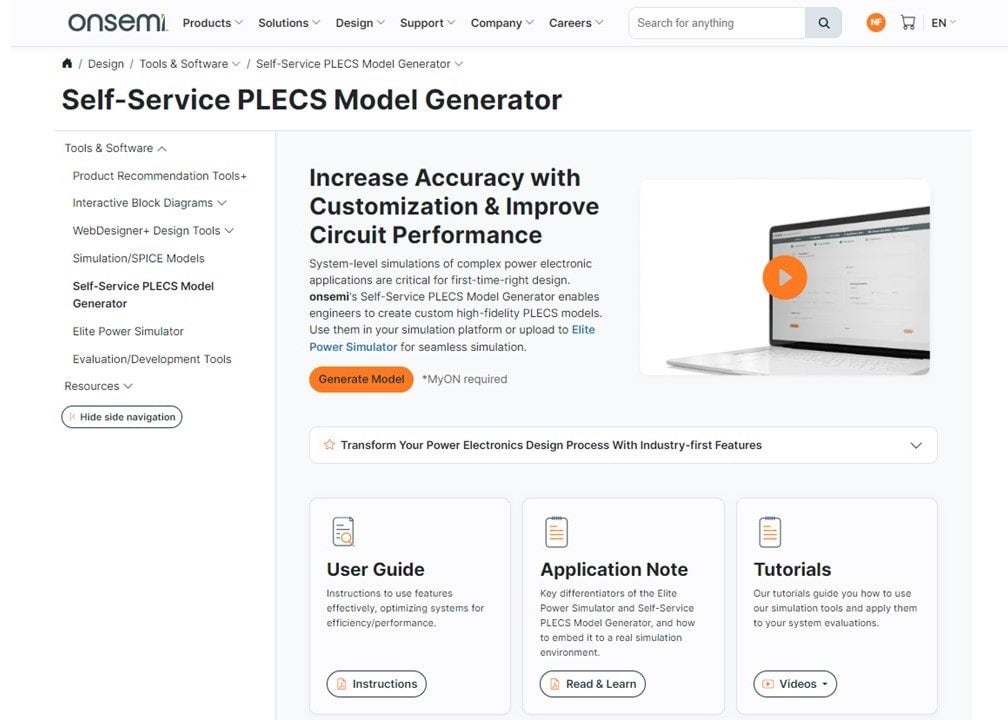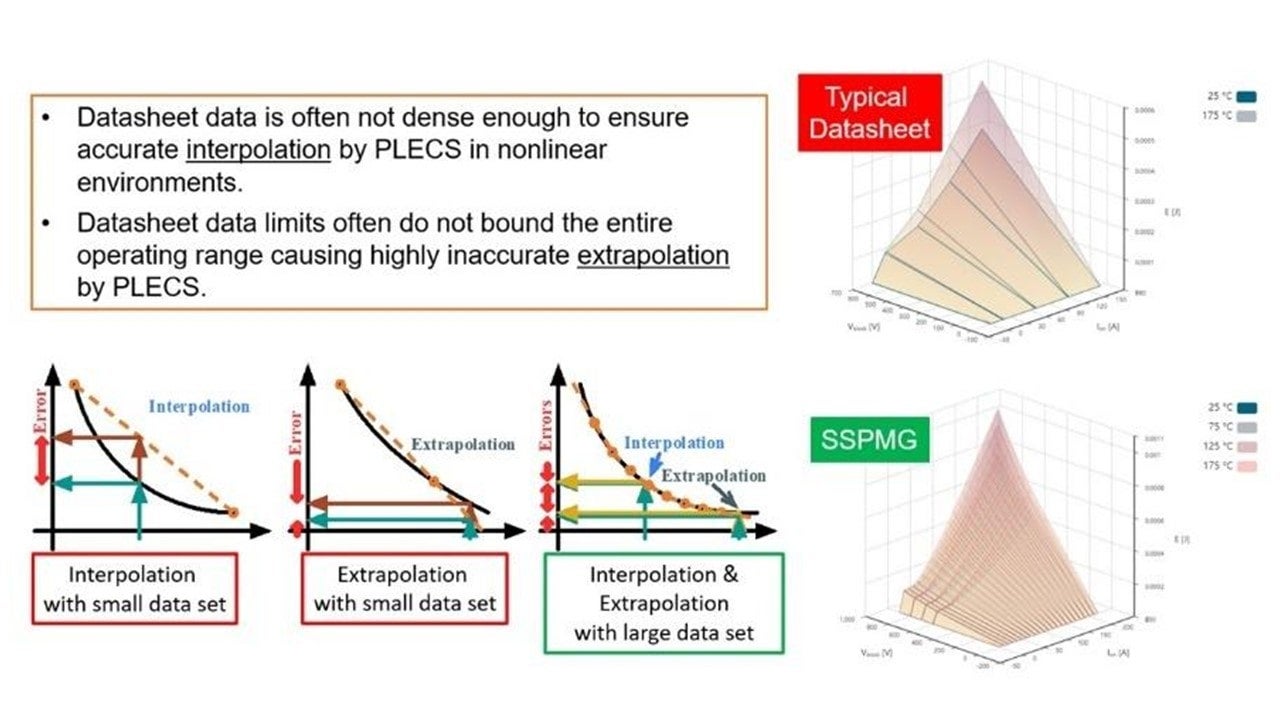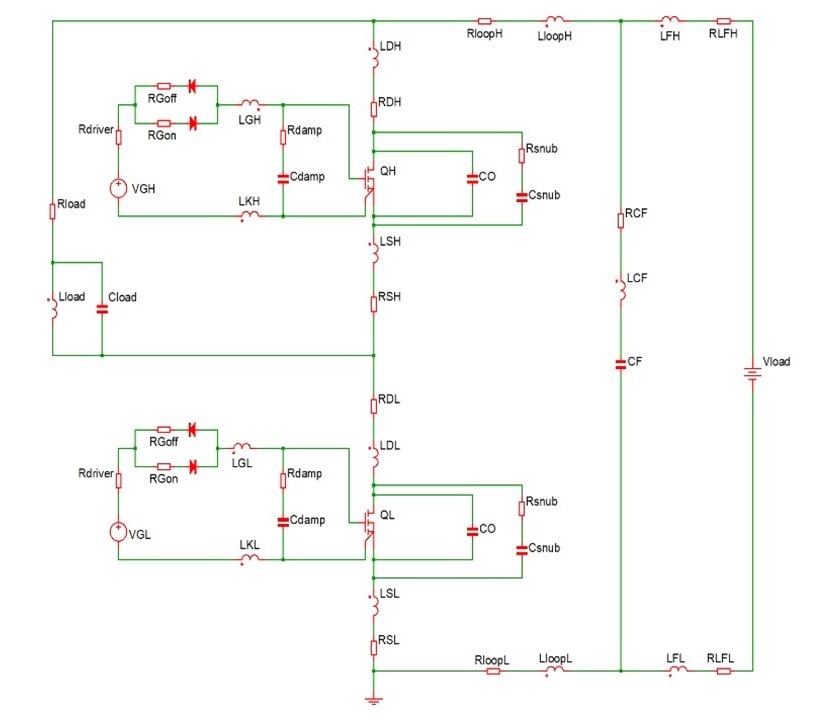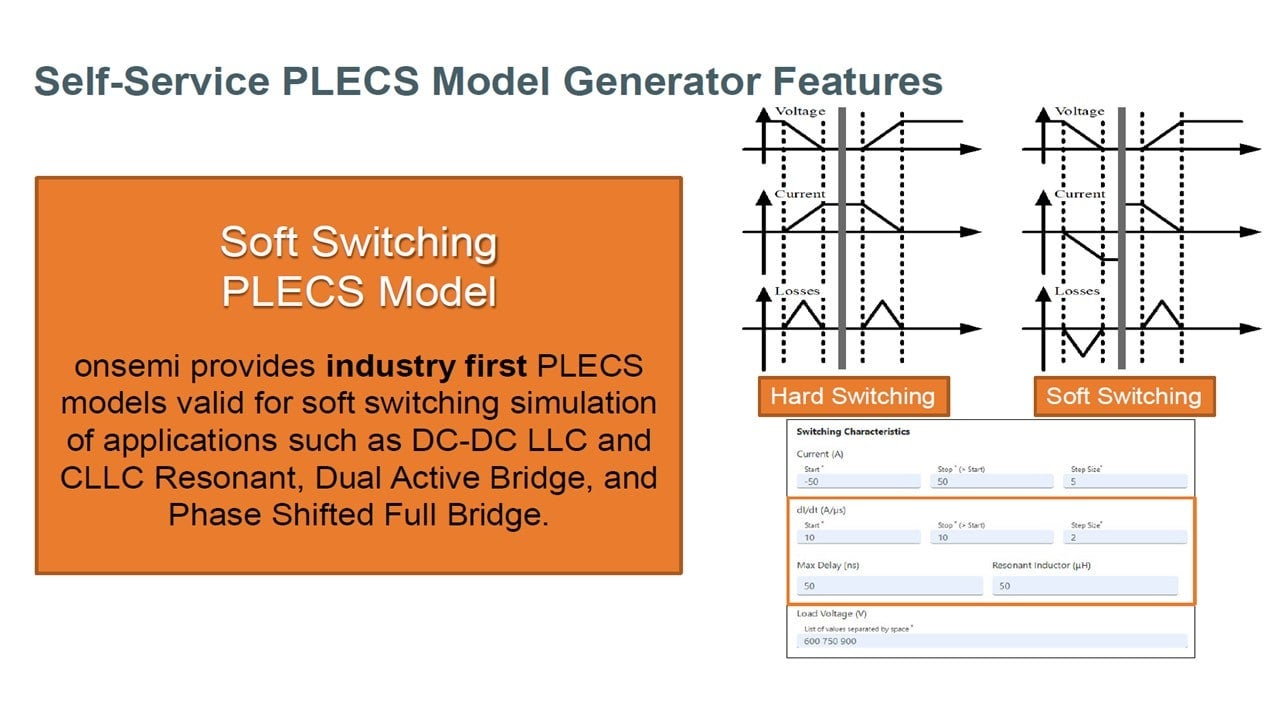Simulation Challenges
Simulation is now considered one of the fundamental tools of the modern design process as it allows component selection, topologies and other key aspects of the design to be verified before prototyping. Not only does this save time, but it also eliminates a lot of the design risk too, giving a high degree of likelihood that the first prototype will perform as expected. This is essential given the precision needed to achieve the performance and power density that modern designs demand.
However, a simulation can only be as accurate as the models upon which it is based. Even deriving a model from a high-quality datasheet has some risk as the datasheet parameters are founded upon laboratory measurements of component characteristics such as conduction, energy losses and thermal impedance.
Furthermore, datasheet-based models are reflective of manufacturer laboratory configurations and environments, which will never represent the multitude of conditions encountered in practical implementations. This is particularly true of aspects such as parasitic elements that will be attributed (at least in part) to the physical layout of the design being undertaken.
Without having an accurate representation of parasitic elements, and any other design-specific attributes, inaccuracies in simulation outcomes can be as high as 30%, rendering the simulation questionable. It is necessary to provide a tool whereby simulation can be based upon a specific application in a defined environment, moving away from generic ‘manufacturer lab’ models.
Driving Simulation Paradigm Shift
onsemi's Self-Service PLECS Model Generator (SSPMG) delivers this by enabling designers to enter design-specific parasitic information relating to their design environment, crafting tailored PLECS models that will deliver accurate results.
The issue of the significant discrepancies arising from datasheet-based models is being understood within the power industry and recognition is growing of the benefits of tailoring simulations to individual needs. Driving this paradigm shift in the industry is SSPMG, a real-world tool that delivers tangible results through significantly improved simulation accuracy. Highly accurate physically based, scalable SPICE model methodologies are a backbone of this tool.
The innovative SSPMG simulation tool also enables designers to add customized high-density tables based on their electrical bias and temperature conditions. This will aid in ensuring that the interpolation between data points within the table is accurate, almost eliminating any need for extrapolation – another key source of errors in system simulation.
Power electronic designs must function across the full distribution of the semiconductor manufacturing process. Recognizing this, the SSPMG tool includes “corner model” capability to represent the different fabrication conditions for the electronic product. Parameters such as threshold voltages, RDSon, breakdown voltages, capacitance, and others will exhibit some variations based on the manufacturing process within the fabrication facility. Capturing and modeling these correlated parametric variations is important at a system level as they materially influence energy losses, conduction losses, and temperature behavior.
In power electronic design, designers must distinguish between soft switching and hard switching. For hard switching, the double pulse test (DPT) is a well-known and reliable approach for the calculation of losses. However, as soft switching depends on topology and operation mode, the DPT produces inaccurate results and is, therefore, not a valid method.
To address and overcome this issue, the SSPMG precisely computes energy losses using a new transition losses tester. This versatile approach is suited to a range of topologies, including phase-shifted full bridge (PSFB), DC-DC LLC, and CLLC resonant. This approach enhances the precision of soft switching models - an area that is often overlooked.
Fortunately, the PLECS models are valid for hard, soft, and synchronous rectification switching operation.
With the SSPMG, designers can simulate their designs and environments using onsemi power products accurately and with confidence. Ultimately, this eliminates the need for significant redesign of early prototypes and shorten design times.
Designers can bring a customized PLECS model generated with the SSPMG directly into their simulation environment or upload it to onsemi’s free Elite Power Simulator for evaluation. Both tools have recently been expanded to include the Field Stop 7(FS7) IGBT products.
By offering the industry-leading Self-Service PLECS Model Generator alongside a diverse portfolio of EliteSiC solutions and IGBTs, onsemi redefines how engineers conceptualize, design, and validate power systems.
Start your next level of simulation experience with onsemi’s Self-Service PLECS Model Generator and generate your own custom PLECS model.
Additional Resources





